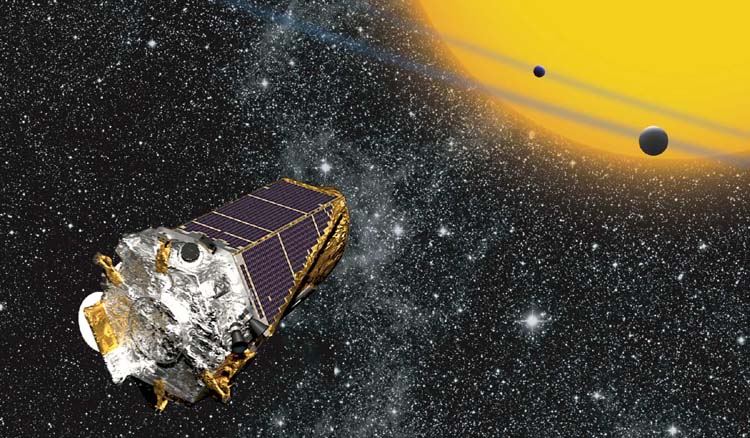
Artist’s conception of the Kepler space telescope observing planets transiting a distant star. (Image source: NASA Ames/ W Stenzel [Public domain], via Wikimedia Commons)
We should be thankful also that it has been possible to compile this epistolarly calendar for Kepler in a number of stages. First, Professor Adam Mosley kindly made available to EMLO the treasure-trove that is his working spreadsheet of astronomical correspondence collated in the course of his research and publication on Tycho Brahe, from which we extracted records of Kepler’s letters and passed these to Dr Francesco Barreca of the Museo Galileo, Institute and Museum for the History of Science, Florence, for significant scholarly expansion. Working from Johannes Kepler. Gesammelte Werke (ed. Max Caspar, et al., currently 20 vols [Munich: C. H. Beck, 1938–]), Dr Barreca expanded the metadata considerably, enriching each letter record with invaluable and searchable abstracts and keywords, and by creating links between letters to indicate which letter is in reply to or is answered by which. Each letter record includes also a link to the indispensable Kommission zur Herausgabe der Werke von Johannes Kepler where, if users click through to ‘KGW Digital’, searchable PDFs of the relevant volumes may be downloaded.
Alongside Tycho Brahe, Kepler is one of the very central figures in early modern cosmology and astronomy, and together these two astronomers are forming the firm foundations of what we hope will develop into a rapidly expanding cluster of astronomically focussed correspondences in EMLO. As a first step towards this, eagle-eyed of users of the union catalogue may have spotted a change in how we are choosing to list and group our ever-expanding list of correspondences. Were you to visit EMLO’s catalogue page you would find now the full index of our correspondences set out alphabetically within the ‘Catalogues’ section in a manner you will recognize, as well as work-in-progress areas where we plan to enable in the very near future chronological, geographical, and thematic searching and where we will provide a number of bird-eye-view visualizations. We will be compiling also useful listings set out both by contributor to EMLO and by holding institution of manuscript versions. We hope you will find these of use as you navigate the expanding EMLO universe; please keep revisiting as it will not be long before you will meet both Kepler and Brahe again in the astronomically themed section. As our work continues, you will notice increasing links being forged between correspondences, across the subject matters contained therein, and among the people and places involved. It is in this way that we will begin to shed light on those who in the period under our investigation worked on, amongst a myriad of other topics, cosmographic mysteries.
